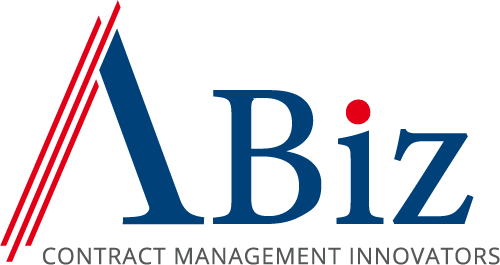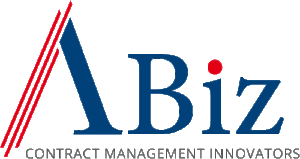A fast-growing technology services company with over 3,000 active contracts is struggling with missed renewals, inconsistent terms, slow negotiations, and limited contract visibility after years of rapid expansion. To address these risks and inefficiencies, the leadership team has commissioned a Contracting Excellence Assessment to establish a baseline, benchmark against industry best practices, and build a roadmap for improving their contracting operations.
When companies grow quickly, like in our example, it’s easy for gaps in contract management to go unnoticed until they start slowing the business down. Before making big moves like adopting new technology, expanding into new markets, or acquiring other companies, it’s important to understand how strong your legal and contracting processes are. A Contracting Excellence Assessment helps organizations get a clear picture of where they stand today, what needs improvement, and how to build a strong foundation for future growth. In this article, we’ll walk through what a Contracting Excellence Assessment is, why it matters, and how it can drive smarter, more sustainable business decisions.
What Is A Contracting Excellence Assessment?
A Contracting Excellence Assessment is a structured evaluation designed to measure how developed and effective an organization’s contract management practices are. The insights gained help companies assess their readiness to support future growth, uncover opportunities to streamline current operations and strengthen collaboration across teams. While some organizations conduct their own assessments, many partner with specialized contract management firms for a deeper, more comprehensive review using proven, proprietary methodologies.
A Contracting Excellence Assessment typically examines a blend of critical areas—people, processes, technology, proficiency, leadership oversight, and contracting activities’ financial and commercial impacts. Organizations use these assessments to benchmark themselves against peers of similar size and aim for world-class performance standards.
In the next section, we’ll explore some of the key benefits a Contracting Excellence Assessment can deliver.
Why Conduct a Contracting Excellence Assessment? Five Reasons with Big Benefits
Every organization thrives on good data to make stronger business decisions; contract management is no different. Without a clear view of internal contract management processes, legal procedures, and operational success rates, companies undergoing major change risk leaving themselves vulnerable to inefficiencies, compliance issues, and lost opportunities.
In Benchmarking Your Contracting Process, World Commerce & Contracting confirms this need for better-supporting data. They state, “Many organizations lack the data needed to support a business case for contract and commercial resources. As a result, they make decisions based on perceptions from the past or on whichever executive is prepared to take ownership.” This often leads to fragmented processes and sub-optimal results.
The World Commerce & Contracting and Icertis Benchmarking Report Series 2023/2024 offers excellent insights into contract management benchmarking trends.
Here Are Five Reasons Why A Contracting Excellence Assessment Is A Smart, Strategic Move
- Understand where your organization stands—both internally and externally. An assessment helps you benchmark your organization’s current capabilities against industry peers and world-class standards. It highlights competitive strengths and uncovers gaps that may hold you back from larger business opportunities, stronger vendor relationships, or attracting top talent.
- Identify inefficiencies, compliance risks, or unclear ownership. Without routine contract auditing, business-as-usual practices can hide costly inefficiencies or evolving compliance risks. Global market shifts and regulatory changes can create new vulnerabilities if they’re not actively monitored. An assessment surfaces issues like process bottlenecks, unclear accountability, or lack of visibility that could put contracts, and business agility at risk.
- Create a roadmap for improvement. Assessments lead to actionable roadmaps prioritizing key improvements, whether investing in CLM technology, redesigning processes, or enhancing staff training. For example, industries like healthcare, which are facing IT talent shortages, need standardized, scalable contracting practices to support significant investments in AI and emerging technologies. A strong foundation allows organizations to move forward with greater speed, consistency, and data-driven confidence.
- Improve service to internal and external customers. Contracting Excellence Assessments spotlight areas where communication, collaboration, or stakeholder alignment may break down. Strengthening these connections builds more resilient internal teams and restores and enhances third-party relationships, creating a culture of trust and transparency.
- Track improvements over time and foster innovation. A good assessment doesn’t just deliver a one-time report; it sets the stage for ongoing progress. Organizations foster a culture of innovation and accountability by committing to continuous improvement. Teams are encouraged to bring forward new ideas, drive better outcomes, and stay ahead of the market. As recent examples show, companies that neglect modernization risk falling behind, especially regarding technology and strategic investments. Contracting Excellence isn’t a destination. It is a journey of continuous improvement.
What Does A Contracting Excellence Assessment Typically Cover? How is it Conducted?
At its core, a Contracting Excellence Assessment is about gathering meaningful insights to drive smarter improvements. It is not just a checklist exercise but a strategic effort to understand how well an organization’s contract management function supports its current operations and future goals. A thorough assessment typically focuses on five key elements:
- Stakeholder Engagement and Data Gathering
The assessment begins by engaging key internal stakeholders across legal, procurement, sales, finance, and business operations. In addition to your leadership input, selected department personnel are surveyed or interviewed to gather frontline perspectives. This dual approach provides a more complete, balanced view, revealing how leadership believes contracts are managed and processes are experienced daily. These insights often uncover important alignment gaps or hidden strengths that might otherwise go unnoticed. - Strengths and Weaknesses Analysis
Using the information gathered, the assessment identifies where the organization excels—and where it faces challenges. This includes evaluating process efficiency, compliance, collaboration, use of technology, and ownership of responsibilities across the contract lifecycle. - Benchmarking Against Industry Standards
The organization’s performance is then compared to similar companies based on size, industry, and complexity. Benchmarking provides valuable context to understanding whether internal practices keep pace with peers or fall behind emerging best practices. - Goal and Project Definition
Based on the findings, clear goals and priority projects are defined to strengthen the organization’s contracting capabilities. These might include implementing a CLM system, redesigning contract templates, formalizing governance models, improving reporting, or investing in training. - Roadmap Development and Progress Tracking
Finally, the assessment delivers a practical roadmap for improvement, with defined milestones and metrics for tracking ongoing progress. Continuous improvement becomes part of the organization’s operating rhythm, ensuring that contract management remains agile, scalable, and aligned with business growth.
Tips for Success:
Turning a Contracting Excellence Assessment into Real Change
- Prioritize Quick Wins and Long-Term Goals.
Balance immediate, visible improvements (like faster approvals or updated templates) with foundational projects that may take longer to implement, such as technology adoption or governance redesign. - Secure Executive Sponsorship Early.
Leadership support is critical to allocate resources, drive cross-functional collaboration, and keep initiatives aligned with broader business objectives. - Make Progress Measurable and Celebrate It.
Set clear KPIs, milestones, and timelines to track improvements over time. Celebrate early successes to build momentum and reinforce the value of continuous improvement.
Turning Assessment Findings into Action
A Contracting Excellence Assessment is only valuable if it leads to meaningful change. Once the evaluation is complete, the real work—and opportunity—begins. Organizations use the insights gained to shape practical strategies, prioritize improvements, and build a stronger, more scalable contracting function.
Here’s how companies typically turn assessment findings into action:
- Translating Findings into Real Improvement
The first step is to organize the findings into clear, actionable initiatives. Some improvements may be quick wins, like updating templates, strengthening approval workflows, or clarifying ownership of contract obligations. Others might be longer-term projects, such as selecting a CLM system, redesigning contract governance structures, or investing in cross-functional training programs. Building a realistic roadmap with clear priorities, owners, and timelines ensures that momentum from the assessment turns into real progress, not just a report filed away - Securing Leadership Support and Resources
Strong executive sponsorship is critical to move improvement initiatives forward. A well-documented Contracting Excellence Assessment provides the data leaders need to support business cases for additional investment in technology, staff development, or process redesigns. With clear benchmarking data and defined goals, organizations can align leadership around a common vision for contract management excellence. - Tracking Progress and Maintaining Momentum
Progress does not stop once initial projects are completed. Organizations that achieve lasting change establish metrics and milestones to track improvements over time. Periodic reassessments, whether annually or tied to major initiatives, help ensure contract management capabilities evolve alongside the business.
From Chaos to Contracting Excellence
As organizations grow, the complexity of managing contracts, processes, and risk increases exponentially. Without a strong contracting foundation, companies often find themselves mired in inefficiencies with systems that no longer serve the business, fragmented processes that slow operations, and departments left struggling to achieve excellence despite significant corporate investments.
The good news is that these challenges are fixable and not permanent. A Contracting Excellence Assessment provides the clarity organizations need to recognize where they stand today and chart a path toward a stronger, more scalable future.
At ABiz Corporation, we specialize in helping organizations cut through the chaos. We bring deep contract management expertise, proven assessment methodologies, and practical, actionable roadmaps that empower companies to transform their contracting operations into strategic assets. Whether you are preparing for major growth, recovering from operational inefficiencies, or simply ready to raise the bar, we can help you build a contracting function that drives results, not delays.
Strong contracts build strong companies. It starts with knowing where you stand and having the right partner to help you confidently move forward. Book a discovery call today!
Author: Nancy Nelson, President, ABiz Corporation, Contract Management Innovators



